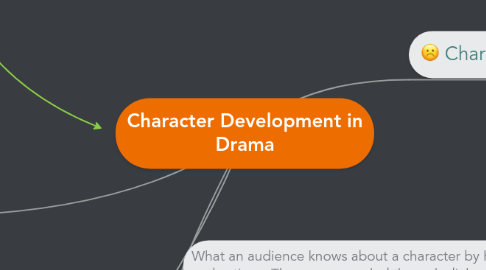Character Development in Drama
by David Hawkins

1. Direct Characterization
1.1. A writer simply tells the audience about the characters
1.2. The narrator, or chorus tell the audience what a character is like.
1.3. It may appear in stage directions.
2. Indirect Characterization
2.1. The character's own words.
2.2. Other characters' reactions to the character
2.3. Descriptions of a character's physical appearance.
2.4. The character's actions and behaviors.
3. Characters and Theme
3.1. What change or growth do characters undergo as a result of their change.
3.2. How do the characters respond to the conflict?
3.3. What are their reasons for responding as they do?
3.4. What insights about human life do these ideas convey?
3.5. What central ideas are emphasized throughout the drama through words and actions of the characters?
4. What an audience knows about a character by his or her words and actions. These are revealed through dialogue and stage directions. Even a character's thoughts can be found in dialogue.
5. Characters and Conflict
5.1. Static - Unchanging; remain the same
5.2. Dynamic - Change and grow
5.3. Flat - one-dimensional; have only one quality
5.4. Round - multi-dimensional; have many qualities
5.5. External Conflict - a struggle against an outside force, such as an enemy, nature, or the pressures of society
5.6. Internal Conflict - a struggle posed by a characters' own beliefs, thoughts, or feelings.
5.7. Protagonist & Antagonist - Usually a single main character (protagonist) who opposes the one who either creates or adds conflict (antagonist)
5.8. Complex Characters - Characters that have strengths and weaknesses and experience mixed emotions. They have multiple motivations and a variety of feelings.


